Sponsored by Shiga Prefecture
Everyone knows Kyoto and the beautiful temples that can be found there on every street corner. Although it is only a few minutes away from Kyoto, few tourists venture into Shiga Prefecture, which is a must-go place for many tourists visiting Japan. Far from the hustle and bustle of popular destinations, the mountainous shores of the huge Lake Biwa allow you to immerse yourself in “authentic Japan”, where Japanese traditions are practiced daily by farming families who continue to live off their land. And if you think that tasting this authenticity is not accessible to visitors to Japan, think again! There are interpreter-guided tours available which will allow you to get a closer look at the daily life of the people of Shiga.
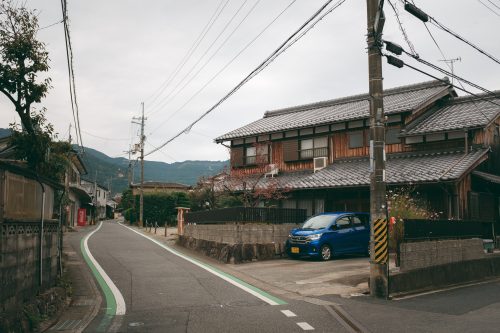
Temples in the middle of mountains
I meet my guide-interpreter at Kyoto Station (note that pick up at Kyoto Station is an optional service which is not included in the tour price), and also meet the two other English tourists with whom I will spend the morning. We board the train together, then a thirty minute ride takes us to the Ogota Onsen Station. Travelers who recently arrived in Japan may not feel very comfortable riding these small local train lines alone, but travelling with a guide will help them to make their journey easier and reassuring.
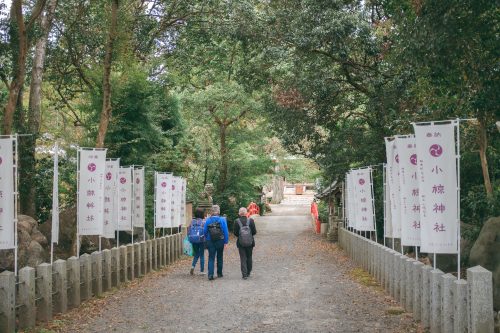
After a short taxi ride, we arrive at our first destination: the village of Ogi. We begin by visiting the Shinto shrine dedicated to the god of rain. I had an opportunity to try an omikuji, which are random fortunes Japanese people are fond of. This omikuji has the unique distinction that it must be immersed in water to make the fortune visible. Fortunately we didn’t need to search for an omikuji translated into English, because our guide was happy to explain our fortune.
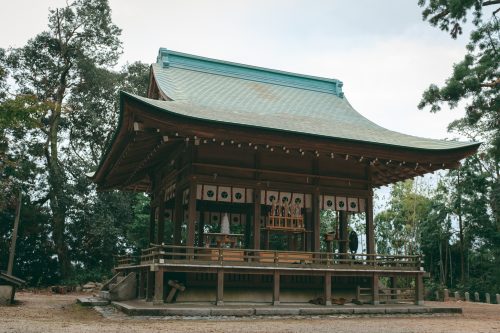
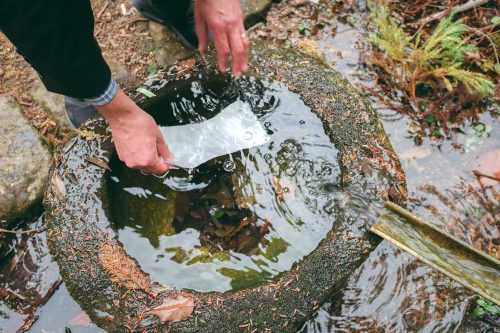
Many shrines are hidden among the trees, and there are even some red torii from Fushimi Inari, the famous shrine of Kyoto. We meet some inhabitants who care for the temple by sweeping and gardening the area. Thanks to them, these places are not overrun by vegetation; they take care of temples and honor gods as their ancestors did before them.
Learn how to make mochi
After a few minutes of walking among the houses of the village surrounded by rice fields, we arrive at a farm where a couple warmly welcome us. The mere act of entering their home allows us to immerse ourselves in decades of tradition. It is nice to be able to sit in a traditional Japanese house enjoying a new friendship over tea.
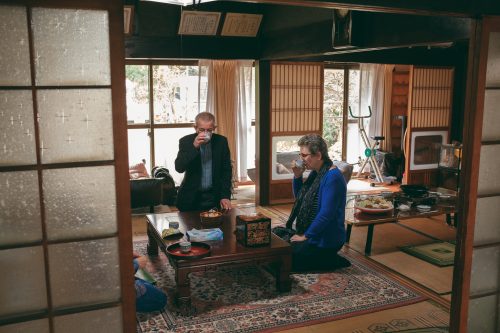
The delicious smell of cooking rice emanates from the kitchen. The grandmother is preparing the rice to make mochi. It is a special rice that is particularly sticky, and a machine begins to turn it into a thick paste.
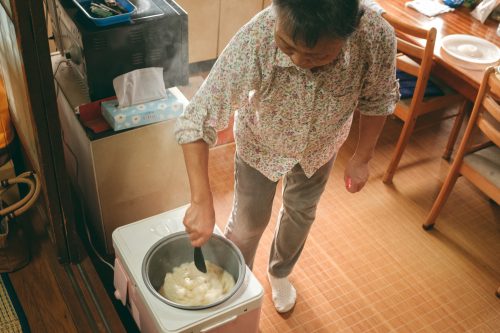
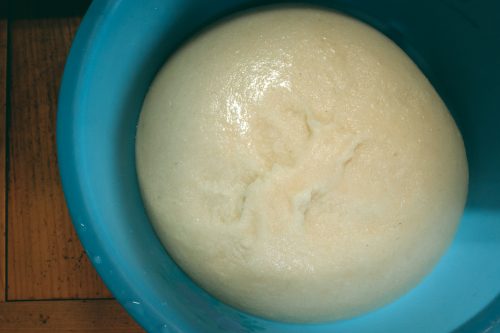
It is time to join in the Japanese tradition and make this rice paste as elastic as possible by pounding it repeatedly with a large wooden hammer. After we move outside, the grandfather explains how to hold the hammer and shows us how to do it.
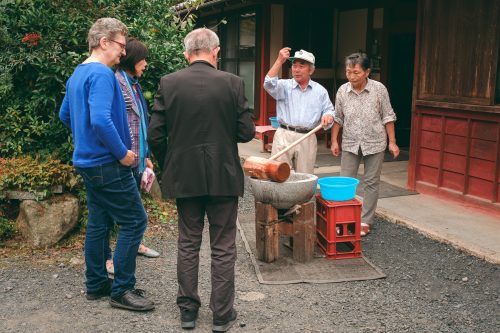
The hammer is heavy and pounding the rice dough takes real physical strength. The grandmother adds a little water and changes the position of the dough between each hammer stroke. We take turns by encouraging each other.
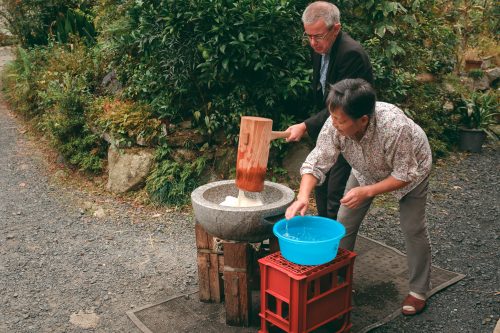
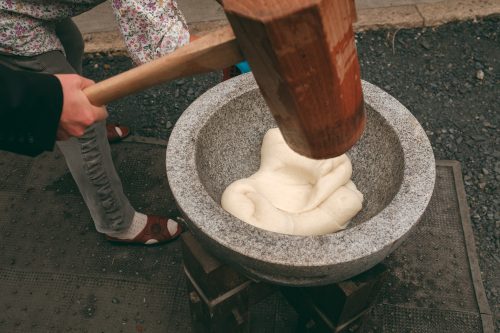
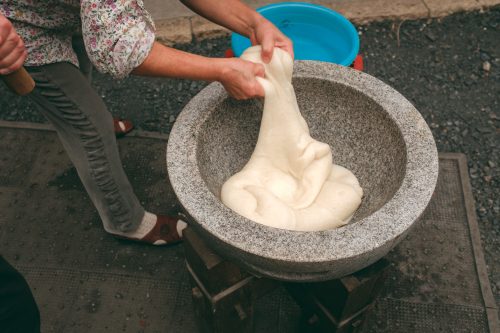
Finally, the dough becomes the right consistency. With only rice, water and a good dose of effort, our mochi is ready! We make small balls with the dough and cover them with kinako, grilled soybean powder which is slightly sweetened. It was a real homemade delicacy.
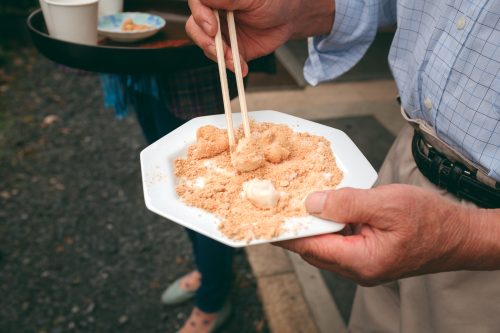
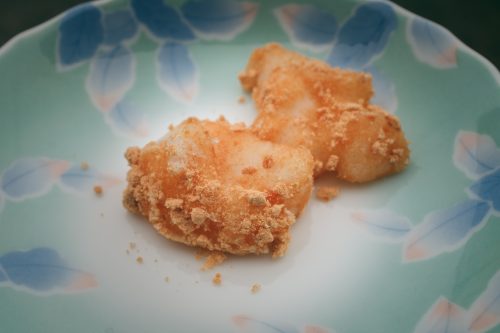
The farmers now take an opportunity to show off a specialty they are proud of: mochi stuffed with natto, fermented soybeans whose consistency and smell can be unusual for Westerners. But the list of health benefits of natto is so long that you should summon up your courage and try it. It is said that eating natto is one of factors which allow inhabitants of the region to live so long. And personally, once I have overcome my apprehension from the appearance of natto, I found it to be an absolutely delicious dish.
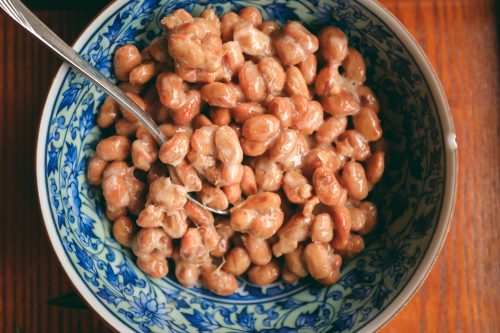
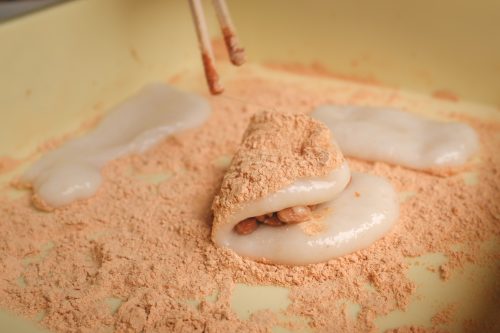
Sharing a meal on the farm with Shiga locals
To end the morning of cultural immersion on the farm, nothing could be better than to share a meal with our hosts. Sitting on the tatami mats, we will have a typical lunch of chicken and vegetable nabe. All the ingredients are cooked together in the middle of the table in a kind of small hot pot. Again, simple and natural: cabbage, mushrooms, rice noodles and chicken, all washed down with a little soy sauce.
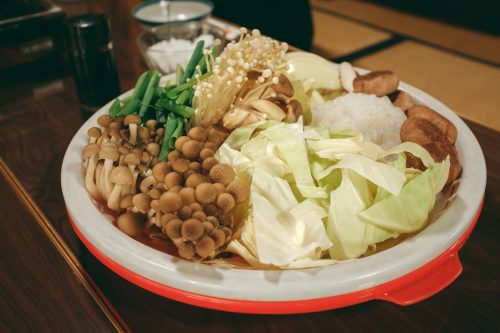
Despite the amazing simplicity of this dish, the vegetables are tasty and the chicken was the most tender I ever had. And what a pleasure to be able to share this meal with our hosts, for whom we can express our thanks through our guide who interprets for us. Farms are gradually lost because young people are preferring to go to the city in order to search for less physically demanding work. Our hosts hope that their son will decide to take over their farm.
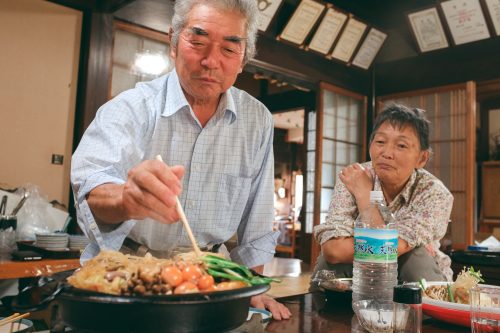
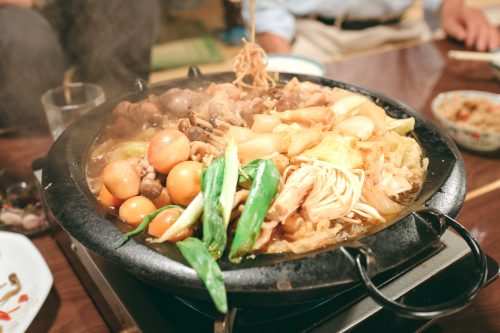
Booking A Farm Visit in Shiga Prefecture
To book a visit to the farm, you will find all the useful information on this site.
A half-day visit for two to three people costs 16,000 yen. There is also an option to take a full day and enjoy baths in an onsen of the region (note that a visit to onsen is not included in the package and an optional choice).


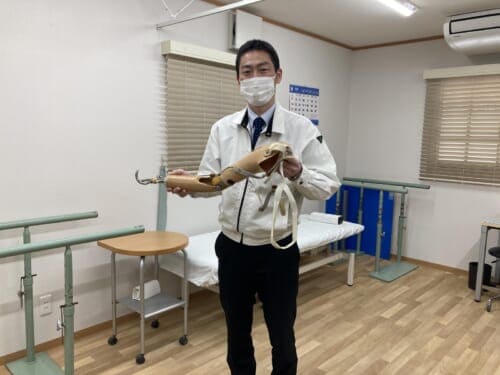
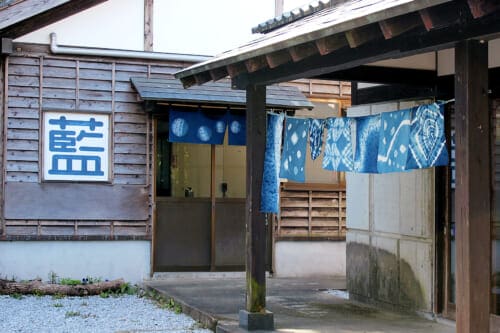
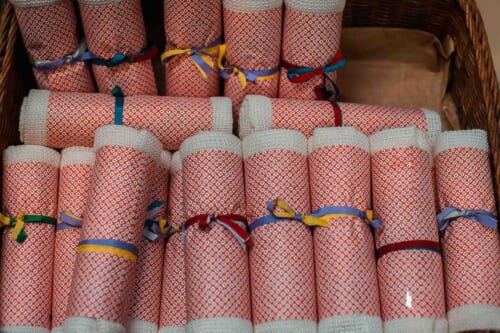
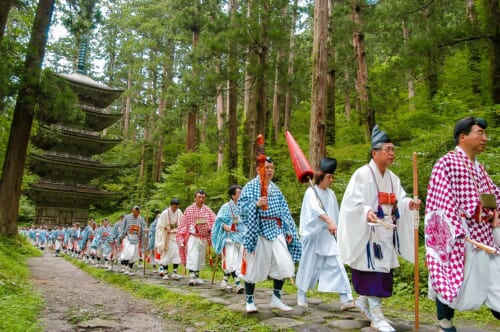
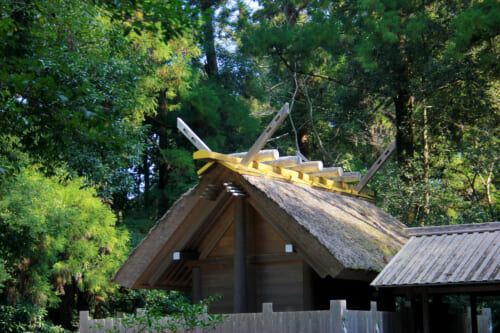
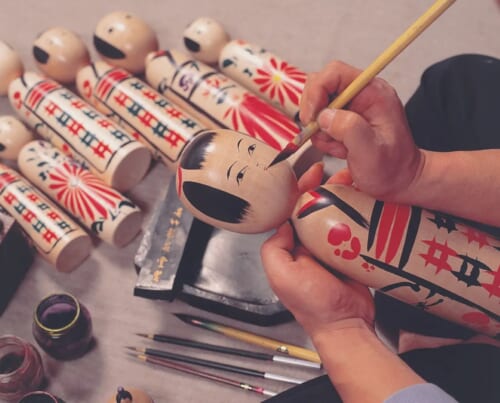


No Comments yet!